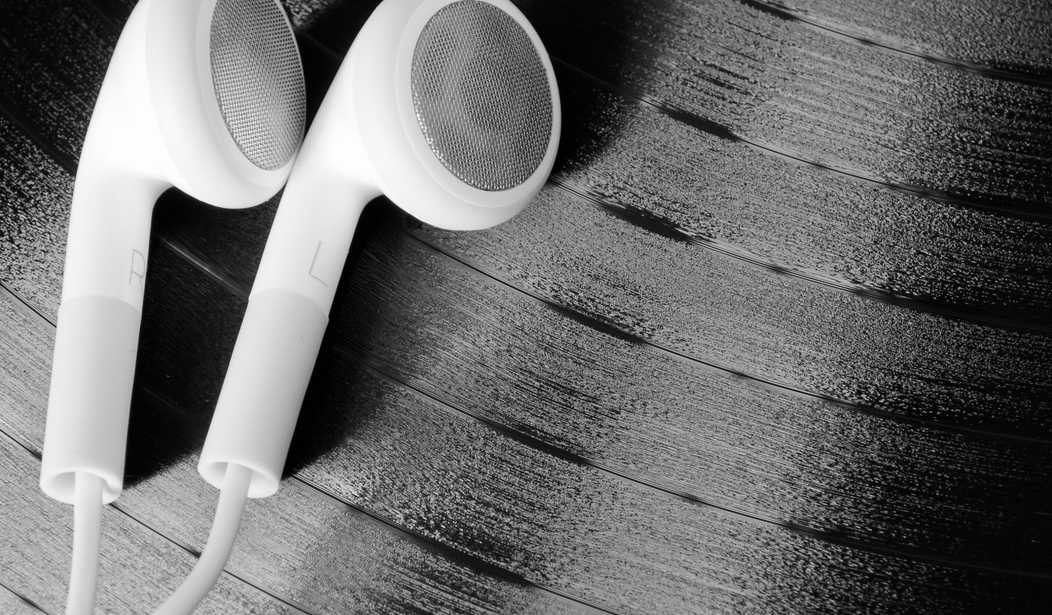With the digital revolution, we’ve seen huge improvements to the quality of our TV and our photos, each exhibiting more lifelike images in higher and higher resolution. But when it comes to music, the quality has gone the other way. I’m not talking about the artists and their performances, I’m talking about the faithfulness of what we listen to compared to the original performance.
When Apple developed the iPod, their goal was to pack as many songs as possible onto its small hard drive. So they figured out how to compress the original performance to about one-twentieth the size. The resulting MP3 files are recognizable, but throws away 95% of the original recording. In side-by-side listening tests, the differences are easy to hear. Compared to the original, the MP3 lacks a smoothness, depth and resolution of the original recording. It’s much flatter and more like listening to AM radio.
CDs offer substantial improvement to MP3 files, but they still contains only about 25% of the information from the original performance.
Now that streaming has arrived on the scene, it’s become even more convenient than the iPod. But, with one exception, the quality is similar to MP3s. Tidal, a new service streams at CD resolution. Again convenience trumps quality.
Still if you want to listen to music that replicates what the artist actually recorded, you want to listen either to vinyl records or high resolution audio files. They’re not as convenient as just turning on your phone and streaming music from the cloud, but they will allow you to experience music in all its glory with the detail and spatial resolution of what the artist intended for you to hear.
New high resolution content, hi-res music players and improved headphones make it more affordable and convenient. And yes, you can really hear the difference. Having worked with Neil Young to develop the Pono Player and Pono Music Store, most can hear the difference, and you need not be an audiophile, just someone who loves and appreciates great music.
My wife, a member of a choral group that performs with the San Diego Symphony listened to music from a Pono music player and tears nearly came to her eyes. She was astounded at being able to place the various instruments just as she can do when she is on stage.
Enjoying music in its full fidelity is one of those treats that not only provides listening enjoyment, but also makes one feel better. Researchers, in fact, have correlated listening to music with how our brain behaves:
CNN reported that Daniel Abrams, an author of the study and a postdoctoral researcher at Stanford University School of Medicine observed,
Participants in a study, who had no formal musical training, listened to four symphonies by William Boyce, while undergoing an fMRI brain scan. The researchers found that among all the participants, the music had an almost identical effect in their brains; it activated brain regions that are involved in movement, planning, attention, and memory — which means that when we listen to music, we aren’t just simply processing sound, like background noise or the sound of a car engine. Music is more meaningful to our brains than just any sound: It’s repetitive, melodious, organized.
The auditory cortex is responsible for processing sounds in the brain, but music activates far more in the brain, including regions associated with emotions, movement, and memory.
Daniel Levitin, a psychologist who studies neuroscience and music at McGill University, told CNN. “There’s this unifying force that comes from the music, and we don’t get that from other things.” In his book This Is Your Brain On Music, Levitin argues that evolutionarily speaking, music led to social bonding and improved fitness.
Like many, I used to have a stereo system, a turntable, and some excellent speakers. But over time, the proliferation of CDs and low res content from devices like the iPod, made listening less enjoyable. But while I was developing the Pono music player I discovered the enjoyment of listening to music again, and realized how the industry has lost its way. There are now a number of players, music sites and headphones that are finding success with those that either loved listening to music or those brought up on MP3 and had never heard quality audio. As a result, there’s a resurgence of vinyl record sales and high resolution digital files. Hi-res music, headphones, and players are also available from a growing list of companies including Pono, Sony, Onkyo, Astell & Kerns (players), and PonoMusic, Onkyo, HD Tracks (music), and Sennheiser, Koss, Audeze, Etymotic, and AKG (headphones).
A high resolution album, the same as the original recording, costs $10 to $20 per album. Players cost from $200 up and a good pair of headphones costs $100 to $300. You owe it to yourself to listen. Most will find the improvement startling. For those who don’t, keep listening to what you’re used to. In my case I’ve returned to enjoying great performances in the same way as I did listening to vinyl decades ago.









Join the conversation as a VIP Member